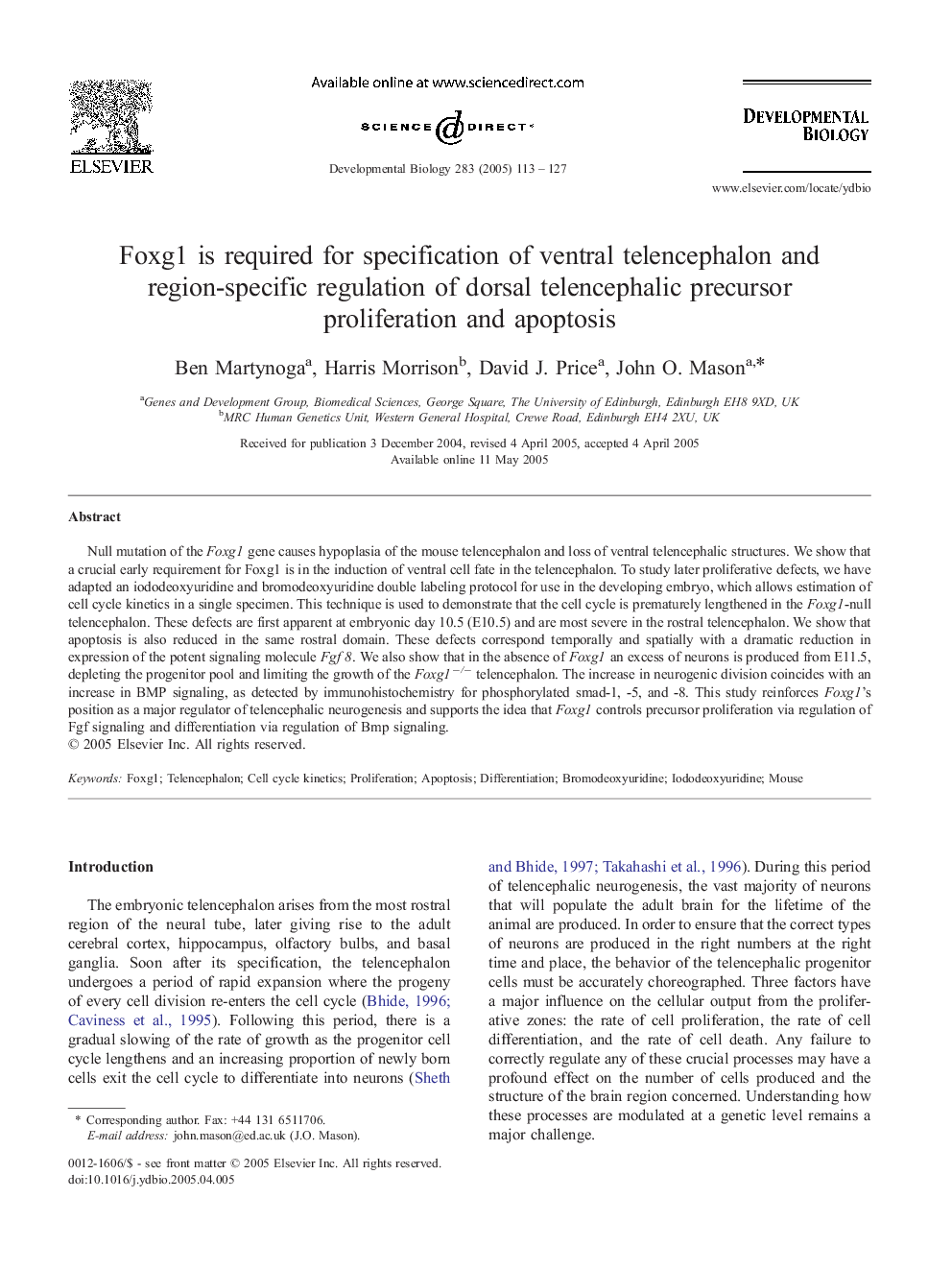| Article ID | Journal | Published Year | Pages | File Type |
|---|---|---|---|---|
| 10934099 | Developmental Biology | 2005 | 15 Pages |
Abstract
Null mutation of the Foxg1 gene causes hypoplasia of the mouse telencephalon and loss of ventral telencephalic structures. We show that a crucial early requirement for Foxg1 is in the induction of ventral cell fate in the telencephalon. To study later proliferative defects, we have adapted an iododeoxyuridine and bromodeoxyuridine double labeling protocol for use in the developing embryo, which allows estimation of cell cycle kinetics in a single specimen. This technique is used to demonstrate that the cell cycle is prematurely lengthened in the Foxg1-null telencephalon. These defects are first apparent at embryonic day 10.5 (E10.5) and are most severe in the rostral telencephalon. We show that apoptosis is also reduced in the same rostral domain. These defects correspond temporally and spatially with a dramatic reduction in expression of the potent signaling molecule Fgf8. We also show that in the absence of Foxg1 an excess of neurons is produced from E11.5, depleting the progenitor pool and limiting the growth of the Foxg1â/â telencephalon. The increase in neurogenic division coincides with an increase in BMP signaling, as detected by immunohistochemistry for phosphorylated smad-1, -5, and -8. This study reinforces Foxg1's position as a major regulator of telencephalic neurogenesis and supports the idea that Foxg1 controls precursor proliferation via regulation of Fgf signaling and differentiation via regulation of Bmp signaling.
Keywords
Related Topics
Life Sciences
Biochemistry, Genetics and Molecular Biology
Cell Biology
Authors
Ben Martynoga, Harris Morrison, David J. Price, John O. Mason,
